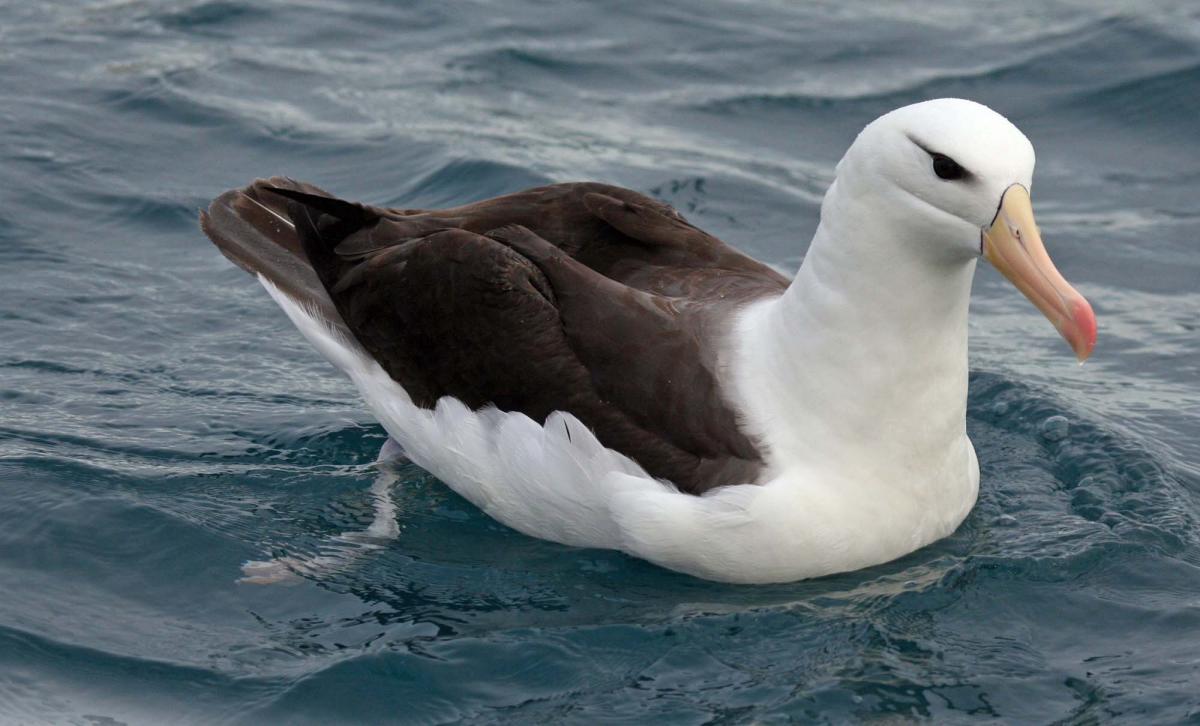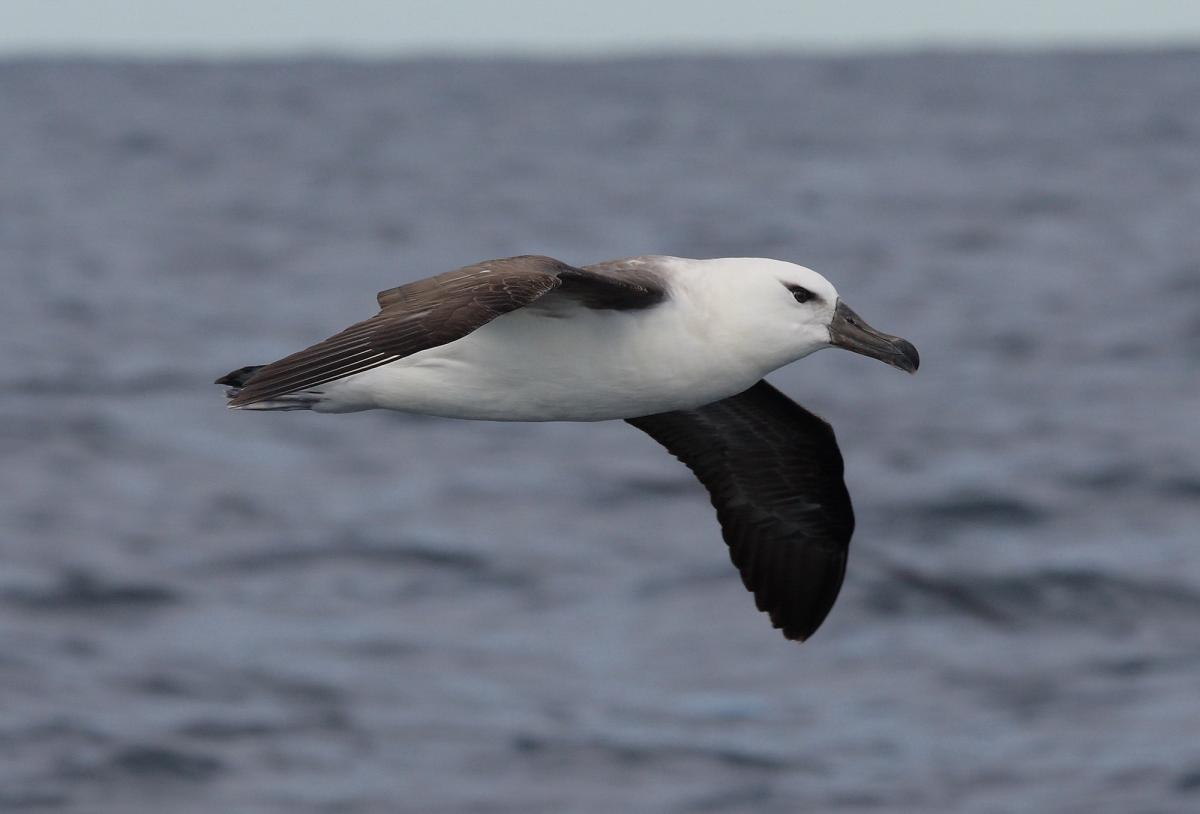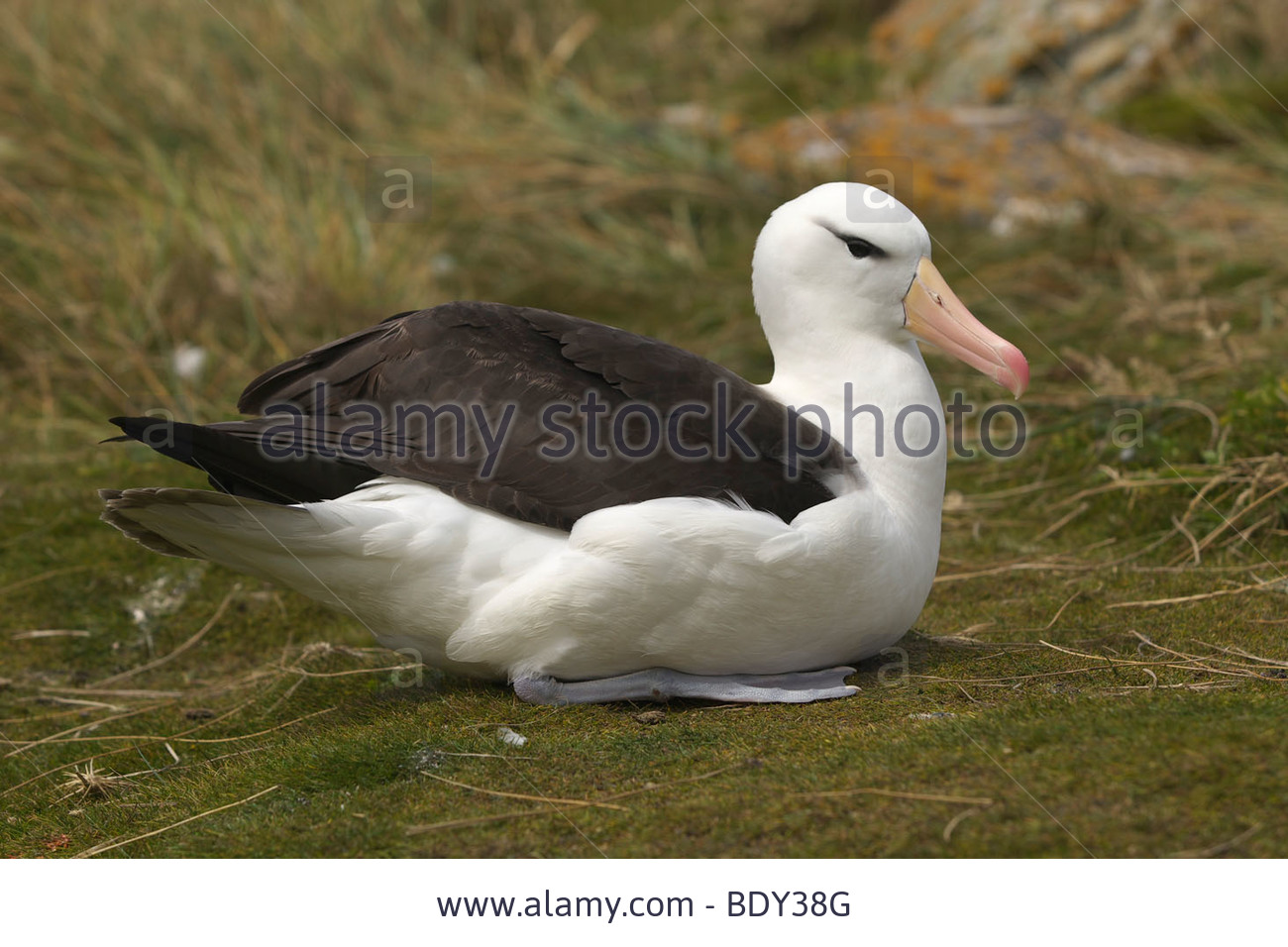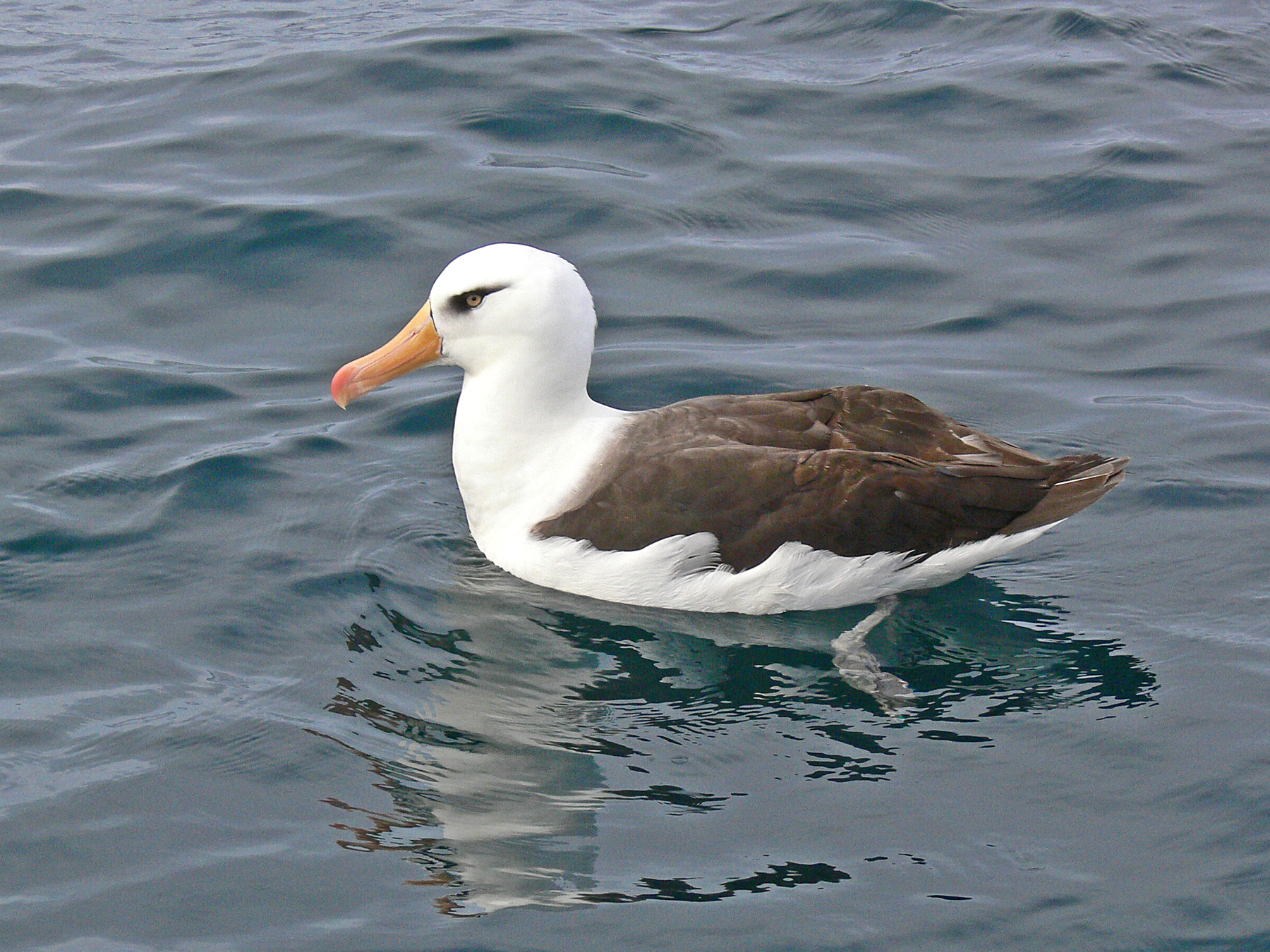
Diomedea melanophris
TAXONOMY
Diomedea melanophris Temminck, 1828, Cape of Good Hope.
Two subspecies.
OTHER COMMON NAMES
English: Black-browed albatross; French: Albatros а sourcils noirs;
German: Schwarzbrauenalbatros; Spanish: Albatros Ojeroso.
PHYSICAL CHARACTERISTICS
Wingspan c. 7.9 ft (240 cm); 6.4–10.3 lb (2.9–4.7 kg). Heavily
built mollymawk with mainly all white body and head, black
upper wings, mantle and tail, underwing black with variable
amounts of central white. Eyebrow black.
DISTRIBUTION
The most plentiful of the albatrosses with 98% of breeding
concentrated in the southern Chile at Diego Ramirez, Islas
Ildefonso, Diego de Almagra (Chile), south Atlantic at Falkland
Islands (12 islands) forming a distinctive genetic grouping; a
second genetic grouping comprising South Georgia, small numbers
at Crozet, Kerguelen, Heard, and McDonald Islands in the
Indian Ocean and very small numbers at Macquarie, Bishop &
Clerk, Antipodes, Campbell Islands and The Snares in the
southwest Pacific. Most common straggler into North Atlantic.
HABITAT
Marine, not significantly pelagic, being found close to coast
more than other albatrosses. Highly colonial breeder, can be in
large colonies of thousands of nests. Often on coastal tussock
slopes or ledges where nests are built of packed soil and grasses
and used in successive seasons. Largest colonies in the Falkland
Islands are on gently sloping rocky terrain without vegetation.
BEHAVIOR
Colonies actively noisy with strident territorial open mouthed
bray with flagging of the head, and aggressive harsh cackling.
Like other Mollymawks uses fanned tail extensively in display
sequences.
FEEDING ECOLOGY AND DIET
Most food taken by surface seizing, with occasional shallow
plunging, and swimming below surface. Mainly crustaceans,
squid, fish, carrion, and fisheries discards or offal. Feeds extensively
on large swarms of krill. Kleptoparisitism (prey theft)
observed with stealing from surfacing shags. Sometimes follows
whales. Often feeds aggressively among flocks of albatrosses
and petrels.
REPRODUCTIVE BIOLOGY
Annual breeder, laying one egg with laying period covering
three weeks with a mean of 10 October at South Georgia, but
three weeks earlier at Falklands/Crozet and Kerguelen Islands.
Incubation is 68–71 days with a guard stage of 1–4 weeks following
hatching, before fledging from 120–130 days. Overall
productivity averages 27% for chicks fledged from eggs laid.
Pairing usually for life. Adolescents return at 2–3 years old and
breed at 10 years with c. 28% or less of fledglings surviving to
breed. Adults have an annual mortality c. 8–9% with females
surviving better than males.
CONSERVATION STATUS
Not globally threatened, with a population of c. 600,000
breeding pairs, but with significant declines noted in some areas.
But D. m. impavida (26,000 pairs) is classed as vulnerable
as its breeding is restricted to one island.
SIGNIFICANCE TO HUMANS
None known.
Photo Gallery of - Black-browed mollymawk




 Animalia Life
Animalia Life